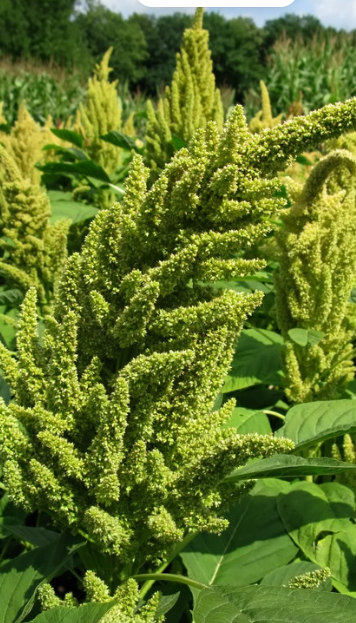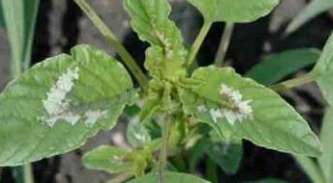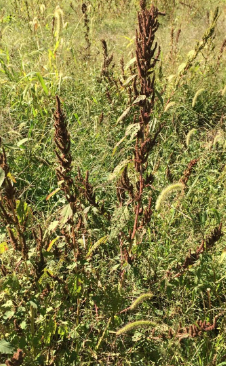Palmer's Amaranth Plant
Palmer's Amaranth (Amaranthus palmeri) grows up to 6 ft, thrives in well-drained soil, full sun, moderate moisture, and is edible but not medicinal.

Habit
Herb
Height
1.5-2 m
Growth
Fast
Soil
Well-drained, loamy
Shade
Full
Moisture
Moderate
Edible
Yes
Medicinal
No
Origin
North America
Climatic Condition
Tropical, Subtropical
Temperature (°)
20-30°C
Humidity (%)
60-80%
Potting media
Loamy, peat
Fertilizers
Balanced NPK (10-10-10)
Watering
Regular, moderate
Plant Weight
100-500 g
Flowering Time
Summer, Fall
Soil Ph level
6.0 - 7.0
Water Ph level
6.5 - 7.0
Soil EC
1-2 dS/m
Yield Per Plant
Leaves, seeds
NPK ratio
10:10:10
life Span
Annual
Health Benefits
Used for food (seeds and leaves), medicinal properties
Suggested Grow Media or Potting Mix ?
50% compost, 25% sand, 25% peat moss
Suggested Fertigation/Fertilizers
Fertilize every 4-6 weeks with balanced liquid fertilizer.
Common Diseases and Remedies
Leaf Spot, Downy Mildew, Rust, Aphid Infestation, Root Rot.
Brown or black lesions on leaves, White, downy growth on leaves, Reddish pustules on leaves, Curled and distorted leaves, Wilting and root decay.
Copper-based fungicides, Fungicides with mancozeb, Fungicides with propiconazole, Chemical insecticides, Soil-applied fungicides.
HEALTH BENEFITS
· Rich in proteins and amino acids, making it a nutritious plant.
· High in dietary fiber, aiding digestion.
· Contains antioxidants that help reduce oxidative stress.
· Some studies suggest it has anti-inflammatory benefits.

